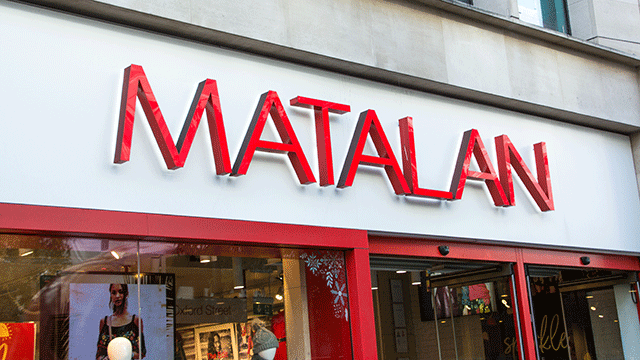 Where in London or the South East can you get double-digit yields and the prospect of long-term capital growth? The answer is: nowhere. You need the northern powerhouse for returns like that.
Where in London or the South East can you get double-digit yields and the prospect of long-term capital growth? The answer is: nowhere. You need the northern powerhouse for returns like that.
Ismail Ghandour, chief executive of Ace Liberty & Stone, has been buying in the North for decades. His latest acquisition is a 17,000 sq ft office block in Gateshead.
“Prices have gone through the roof in London, and I can only see value in the northern powerhouse,” says Ghandour. “The yields are better and there is the prospect of real capital growth, particularly if you look ahead to re-using the building. In Gateshead, for instance, there are lots of students around, so it could be student housing – and we have income in the meantime.”
Ghandour says he has been priced out of Manchester – “the biggest market outside London, with lots of competition, so prices have been driven high” – but is still buying in the other northern cities.
“It needs to be double-digit yields, or very close to it unless there is some special reason. Anything below 8% and we walk away, unless there is some huge angle to explore,” he says.
According to serious property investment players, 2016 presents an opportunity to buy into the northern powerhouse cities at ground-floor prices, then watch them grow.
Chris Taylor is chief executive at Hermes Real Estate and one of those who can afford to buy in Manchester. Hermes’ northern powerhouse investments include backing the Co-op’s £800m NOMA office and residential scheme in Manchester and its partnership with Canada Pension Plan Investment Board to development 1.5m sq ft in an office-led scheme at Wellington Place in Leeds.
If you want an early-stages mini-London in which to invest, look no further than Manchester, Taylor suggests. “Investors will go to the cities where the human capital – graduates and skilled professionals – is retained, and Manchester is the stand-out city. It is already attracting global capital,” he says. “And don’t forget Liverpool and Leeds, where we are investing, and we would invest more if they were more connected to Manchester through projects like the high-speed rail line.”
“In major cities like these there is an opportunity to invest in real estate at a substantial discount. These places have good workforces and better connections, and if you get involved at the ground level you have a great opportunity. There is a snowballing effect in these cities, and we are attracted by that.”
Outside of established central business districts, investing in the office market is a medium- to long-term play. More immediate opportunities are to be found in meeting the short-term supply crisis in some northern powerhouse office markets and in the growing and heavily tipped market for private rented housing in the city centres.
However, Richard Platt, director at Lambert Smith Hampton, warns that investors need to look beyond city centres. “The knowledge-based and media businesses are strong throughout the North, science and medical have strong links with the universities and the public sector, and there are pockets of advanced manufacturing. All of these will provide property investment opportunities,” he says.
Port-centric development – important in Liverpool, Hull and the North East – is also tipped as a strong medium-term play. Manchester Airport – now seeing substantial Chinese investment – is also heavily fancied.
“This is about incremental improvement. Investors should not expect everything to happen tomorrow, but tomorrow the opportunities to invest will have diminished, which is why we are seeing landbanking throughout the northern powerhouse cities,” says Platt.
The best opportunities come from growing business sectors and, according to GVA’s regional director Mark Rawstron, that will vary from city to city. He says: “Look at the factors driving the economy of each city – whether it is the port in Liverpool, or advanced manufacturing in Sheffield – and then look at where the public sector investment grows, and that is where property investors will see growth.”
Offices
Office yields in Manchester and Leeds are keen, at 4.75% and 5.25% respectively, according to Bilfinger GVA.
Speculative developers are at work, and there are refurbishments aplenty. But in Sheffield it is a different picture, which is good for the occupational market.
Like many northern powerhouse locations, it is benefiting from a higher profile and back-office relocations from occupiers such as telecoms giant XLN and US law firm Fragomen.
Although only 28,000 sq ft and 12,000 sq ft respectively, each firm is new to the city and each doubled its original take-up.
That rents in good secondhand Sheffield offices are £8.50-£14 per sq ft – less than half those in Leeds or Manchester – is part of the appeal. Local agents say there are opportunities for rental growth.
Development sites
International investors expect stronger medium-term growth in the northern powerhouse cities. In Leeds, Vastint, the property arm of Swedish giant Inter IKEA, has paid £35m for the 22-acre Carlsberg Tetley site.
And in its first regional venture, Singapore’s Heeton Holdings has paid £7m for a 2.5-acre site on Bridge Street, where a 1m sq ft scheme will be next to a new John Lewis store.
Ben Hall, head of investment at Bilfinger GVA in Leeds, says: “Both are big votes of confidence in the future of Leeds’ South Bank regeneration and I doubt either would have bought unconditionally without the confidence the northern powerhouse brings.”










